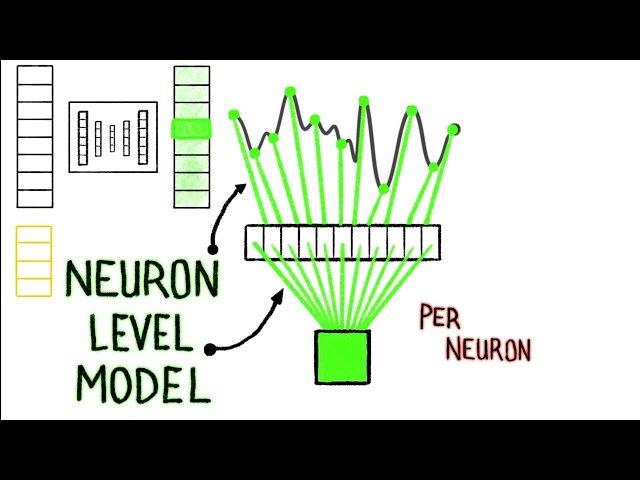Continuous Thought Machines
A New Frontier in AI
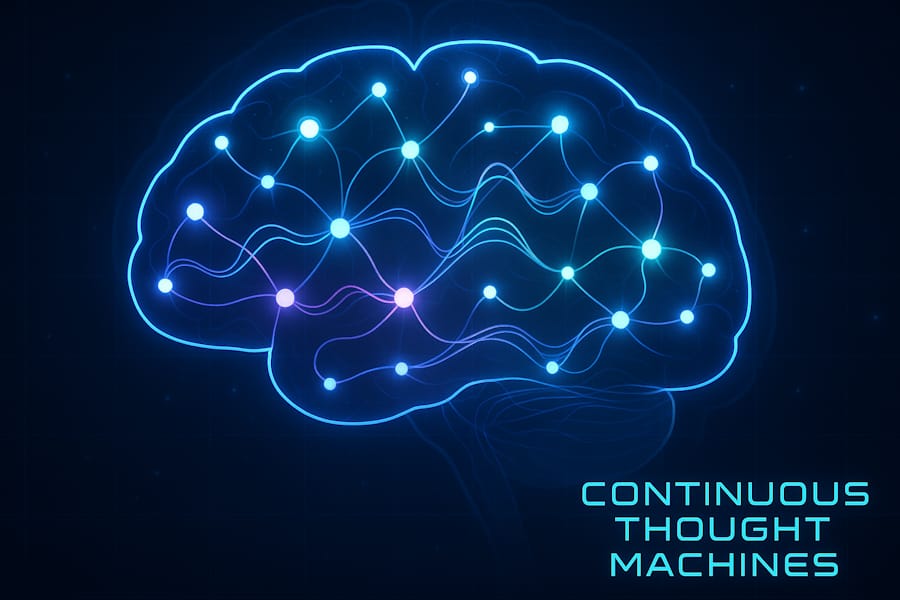
Publish Date: Last Updated: 6th August 2025
Author: nick smith - With the help of GROK3
In a groundbreaking leap for artificial intelligence, researchers at Sakana AI have unveiled the Continuous Thought Machine (CTM), a new type of neural network that mimics the dynamic timing of the human brain. Unlike conventional AI models, which process data in rigid, layer-by-layer steps, CTMs think over time, using synchronized neuron activity to solve problems with remarkable flexibility. This innovation, detailed in a recent paper and an interactive report by Sakana AI, could redefine how machines reason, learn, and interact with the world.
A Brain-Inspired Approach
Traditional AI models, like those powering chatbots or image recognition systems, rely on static architectures that process data in discrete steps. These models, while powerful, often demand vast computational resources and struggle to explain their decisions. CTMs, however, take a different path. By leveraging "neural timing"—the synchronized firing of artificial neurons—they emulate the brain’s ability to process information dynamically. “CTMs use time as a core component of computation, allowing them to adapt to the complexity of a task,” explains the Sakana AI team in their interactive report.
This approach enables CTMs to “think” step-by-step, much like humans do when solving a puzzle or planning a route. In a striking demonstration, Sakana AI showcased CTMs navigating complex mazes, adjusting their strategies in real time—an ability that hints at their potential for tasks requiring sequential reasoning.
What Sets CTMs Apart?
The key difference lies in how CTMs process information. Conventional neural networks, such as transformers or convolutional networks, pass data through fixed layers, often requiring extensive training data and energy. CTMs, by contrast, evolve their internal states over time, using coupled oscillators to synchronize neuron activity. This allows them to handle tasks with varying complexity without predefined steps, potentially making them more efficient.
Another advantage is interpretability. Traditional AI models are often criticized as “black boxes,” with decisions that are hard to trace. CTMs, however, offer a window into their reasoning. “Their dynamic nature lets us visualize how decisions are made, which is a big step toward trustworthy AI,” notes the research team in their arXiv paper. This transparency could be crucial for applications in fields like healthcare or autonomous driving, where understanding AI decisions is paramount.
Potential Applications
The possibilities for CTMs are tantalizing. Their ability to reason sequentially makes them well-suited for tasks like:
-
Robotics: Enabling robots to navigate unpredictable environments with human-like adaptability.
-
Speech Recognition: Processing audio patterns over time for more accurate transcription.
-
Planning and Decision-Making: Powering autonomous systems that need to make complex, real-time decisions, such as self-driving cars or drones.
-
Scientific Research: Assisting in simulations that require dynamic modeling, like climate forecasting.
Posts on X have buzzed with excitement about CTMs’ potential to bridge the gap between artificial and human-like intelligence, with some calling them “a game-changer for reasoning tasks.”
Challenges and Limitations
Despite their promise, CTMs are still in their infancy. The Sakana AI paper acknowledges that their scalability for large-scale tasks, such as natural language processing, remains untested. Current models like transformers, which power tools like ChatGPT, have been heavily optimized for such tasks, giving them an edge in performance.
Additionally, developing and training CTMs requires specialized knowledge of neural dynamics, which could slow their adoption compared to more established AI frameworks. Energy efficiency, while a potential strength, also depends on further optimization to compete with existing systems. As one researcher cautions, “CTMs are a bold step, but they’re not yet ready to replace traditional models across the board.”
The Road Ahead
The introduction of CTMs marks a bold shift in AI research, one that prioritizes biological inspiration and dynamic processing. While challenges remain, their ability to reason, adapt, and explain decisions could pave the way for more efficient, transparent, and human-like AI systems. As Sakana AI continues to refine this technology, the world may soon see CTMs powering everything from smarter robots to greener AI solutions.
For now, CTMs are a glimpse into the future—a future where machines don’t just compute, but think like us. To explore CTMs yourself, check out Sakana AI’s interactive maze-solving demo at pub.sakana.ai/ctm or dive into the full research paper at arxiv.org/pdf/2505.05522.
Continuous Thought Machines on YouTube

NEW AI Thought Machine - Artificial Time (No Transformer)
YouTube Channel: Discover AI
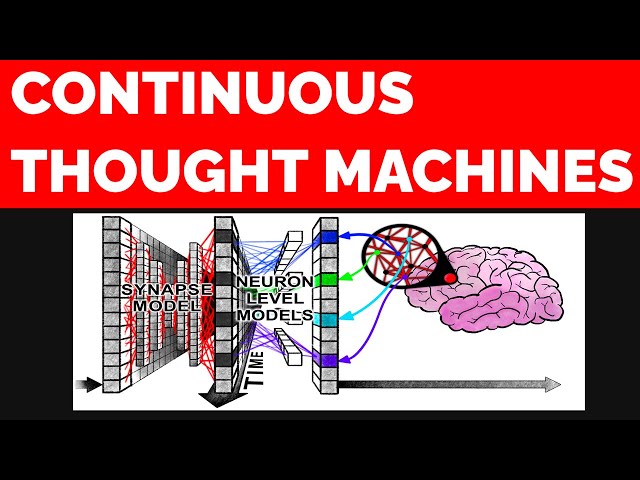
Continuous Thought Machines - Biological BRAIN Like AI ( Neural Networks ) - #SakanaAI
YouTube Channel: AI WITH Rithesh
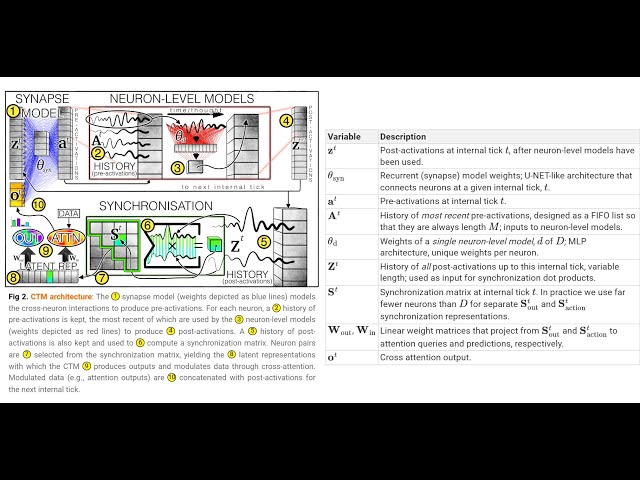
Continuous Thought Machines
YouTube Channel: Xiaol.x
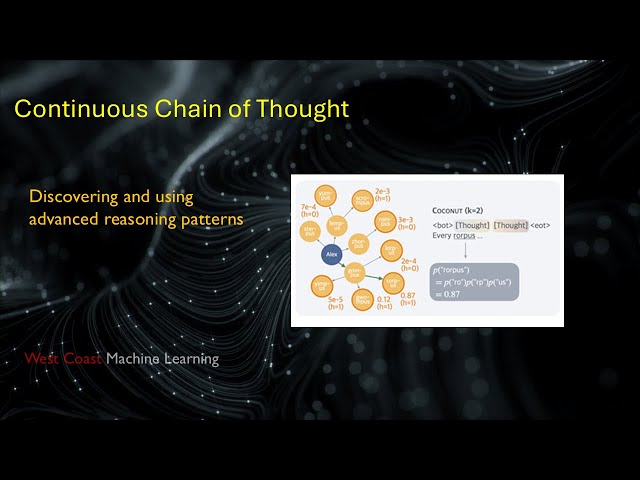
Continuous Chain of Thought
YouTube Channel: West Coast Machine Learning
Latest AI News Articles
AI Questions and Answers section for Continuous Thought Machines
Welcome to a new feature where you can interact with our AI called Jeannie. You can ask her anything relating to this article. If this feature is available, you should see a small genie lamp in the bottom right of the page. Click on the lamp to start a chat or view the following questions that Jeannie has answered relating to Continuous Thought Machines.
Be the first to ask our Jeannie AI a question about this article
Look for the gold latern at the bottom right of your screen and click on it to enable Jeannie AI Chat.

